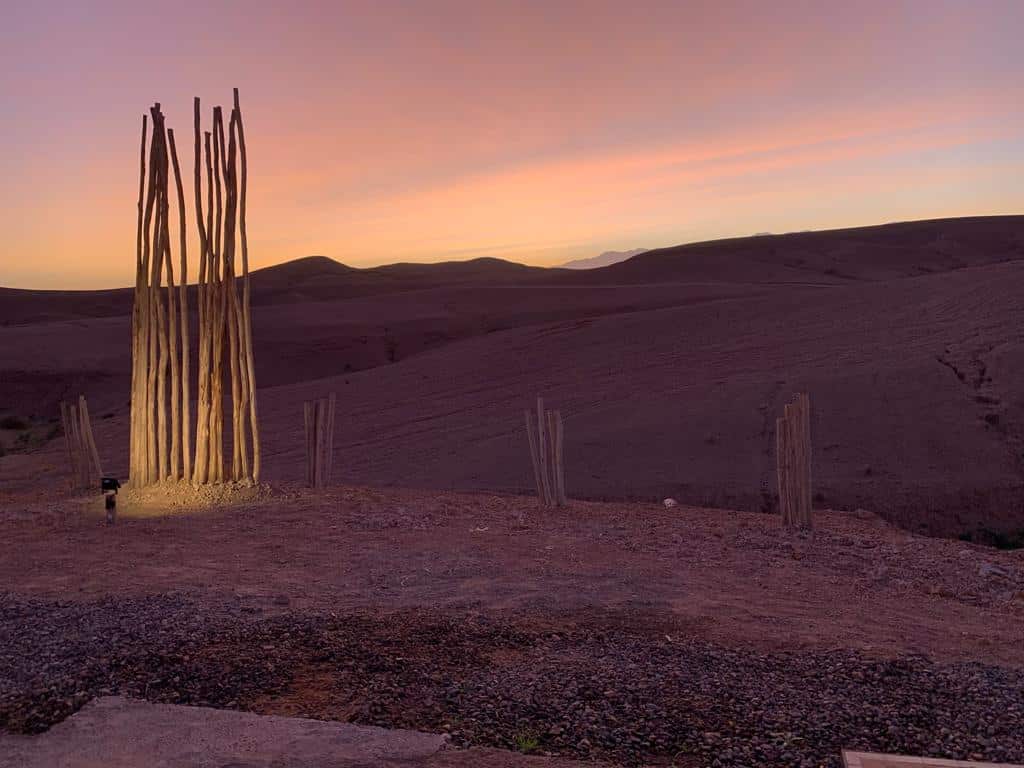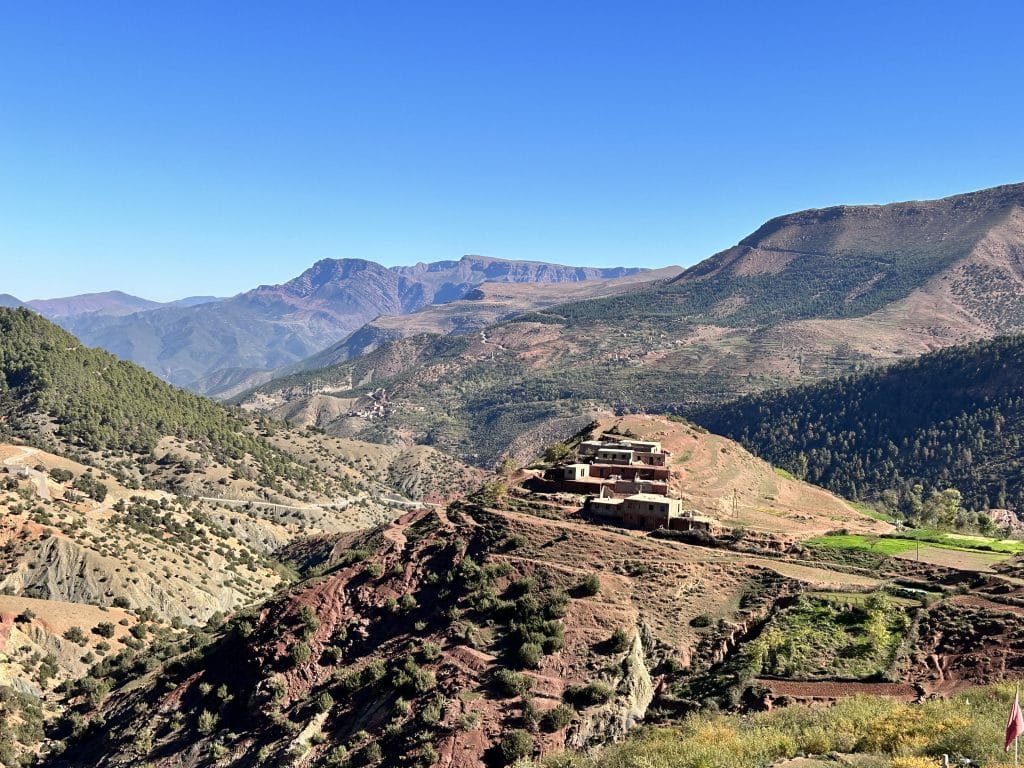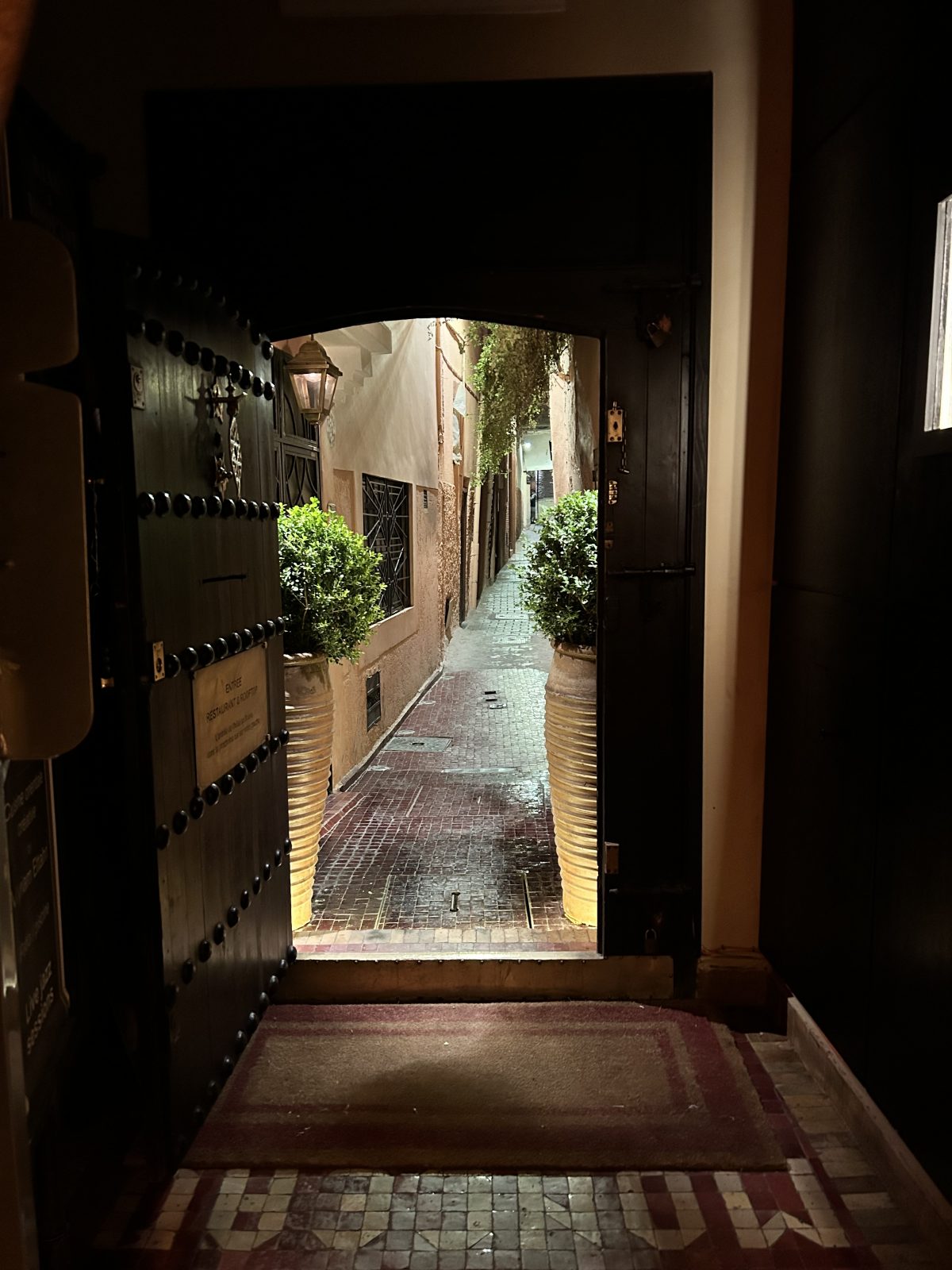The Unmissables; Behind the secret doors of Morocco

‘Everything is hidden’ our Berber guide told us as we wandered the streets of Marrakech.
‘We don’t show off our riches, we keep them inside. That is why you can’t see anything from the road.’
Morocco is full of surprises, and, as we found, many of them are secreted behind humble alleys, thick wooden doors, or tall, heavy gates. Whether you are stepping into your riad, entering a museum, or crossing the threshold of one of Morocco’s beautiful gardens, you will find all the riches on the inside. It is one of the most enchanting and memorable aspects of this fascinating country.
Morocco has been on a journey. For years, it has been entry-level Africa for the curious; the perfect place to try one’s hand at this mysterious and often, uncomfortable, continent. Morocco’s mystical brand has attracted backpackers, trekkers, weekenders, and culture seekers, keen to explore and experience its frenetic cities and wide-open spaces.
Morocco’s star is in the ascendant. Despite reopening relatively recently to international travel in February, Morocco is expecting its 2022 tourist arrivals to reach 80% of the 2019 figure, and to exceed it in 2023. The destination is emerging strongly from the pandemic, and pent-up demand, especially for meaningful and authentic travel, is delivering tourists in search of winter sun to Marrakech, Casablanca, Agadir, Fez and beyond.
I visited Morocco in November, the first real holiday taken with my (newish) partner, and a deliberate choice to take an adventure together, to pack our precious child-free week with memorable experiences, and to enjoy some pampering. For me, it was the first time to North Africa, but my partner had visited 15 years previously. We were coming from very different starting points. His memories were of lovely people, fabulous architecture and beautiful journeys, but also quite a lot of dust, craziness and street hassle. I was dreaming of the exotic; luxury riads, spa treatments, sumptuous soft furnishings, and romantic evenings. He was a bit worried I wouldn’t like it. Happily, he was wrong.
My interest in travelling to Morocco was piqued 20 years ago, when two friends returned from Essaouira raving about the perfect mix of sunshine, great food, cheap prices and an exciting cultural experience, way more interesting than that on offer from most other short haul destinations. In 2001, I started to make plans to visit, but on 9/11 the world changed and my nerve changed with it. The arrival of two children also cut the legs off my sense of adventure for around 15 years.
But now, I was ready. Covid has delivered few positives, but it has made me less risk averse and keener to grab life’s opportunities by the throat. And, if you feel the same, Morocco is a brilliant choice.
A week is not long, so choose your itinerary wisely and consider taking an organised tour with one of the many specialist tour operators. We decided to start our journey in Marrakech but to move swiftly south to the Agafay desert, the High Atlas Mountains, then to cross west to the coast and spend a couple of nights relaxing in Essaouira.
Arriving in Marrakech’s swanky new airport, you could be forgiven for thinking you’d touched down in the Middle East. Step outside, and you’re in Africa, as the heat rises up, the sun beats down and the taxi drivers vie for attention.
Marrakech is a delight. It has changed a lot over the past 20 years or so, and, whilst the city is still a melting pot of sounds, smells and some crazy sights, there has been investment in the infrastructure and attention given to the tourist experience. The central square of Jemaa el-Fnaa retains its authentic Moroccan charm, with snake charmers, storytellers, and belly dancers, but it is now paved, and well lit.
It is surrounded by rooftop bars from which, for the price of a can of Coke, you can watch the sun set and the market come alive and, should you choose, there are pretty horse-drawn carriages to take you around the medina. The souks start at this square, and there are miles of them. Shopping in Marrakech’s souks is a surprisingly pleasant experience and not one to be concerned about. There is a degree of hassle, of course there is, but in our experience, it was friendly, never aggressive, and usually accompanied by a smile. Haggling becomes a fun game as you get used to it, and it is always possible to walk away with a quick ‘I’ll be back later’ without giving offence.
You do, however, need to accept major differences and keep an open mind. Sadly, there are still monkeys dressed up for photographs, there are hobbled donkeys, and the snakes do not look particularly ‘charmed’. I hope, in time, tourists will vote with their feet in this regard and soon the monkeys, at least, may become a thing of the past. And it is worth noting that cats and dogs (of which there were many) seemed relatively well cared for.
We were extremely well cared for, with our safety and wellbeing the priority of our hosts.
At the gorgeous Dar Seven riad in the north of the medina, we were offered pre-loaded mobile phones to call for an escort home from the souks or restaurants at the end of the evening. One night, when we were completely lost in the medina, a kindly old man on a motorbike led us through several winding back streets to find our restaurant. The small tip we offered was more than worth it for our safe delivery.
The Moroccan National Tourism Office talks about the ‘living culture’ of Morocco. It is not a place of folklore. It is a place where the customs, languages and costumes continue to thrive. Whilst you can buy a jellaba (traditional kaftan) in any number of tourist shops throughout the region, you will also see them being worn by the locals. Whilst homeward bound suitcases may bulge with earthenware tagines purchased in the souks, they are also found in every kitchen and on every menu. You can pay handsomely for a private hammam experience in your luxury riad (and believe me, it’s worth every penny). But most Moroccans visit the public hammams every 7-10 days as part of their basic hygiene rituals.
For many tourists from the UK, Marrakech will be the only experience of Morocco, with weekend trips to the city growing in popularity due, largely, to the prolific low-cost flights from our regional airports. A typical itinerary for a weekend will include some pampering in your riad, shopping in the souks, an evening out at Jemaa el-Fnaa and dinner in the medina, plus a visit to the very beautiful, but very crowded, Majorelle Gardens, and Yves Saint Laurent museum next door.

However, if you have a few more days, do take them. The next stage of our journey took us about 45 minutes out of Marrakech, to the Desert d’Agafay. This is a relatively new tourism product, developed around five years ago as part of a drive to encourage a greater spread of tourism benefit beyond Marrakech. It has been very successful, with quad biking, camel riding, and luxury camps strewn across the wide-open spaces of the desert. We stayed at YesWeCamps, glamping to the extreme with swimming pool, bar, restaurant and a selection of high-end bivouacs. The view across the desert as the sun rose was simply stunning.
Next stop for us was the Ourika valley and the realisation of a long-held dream to open my bedroom window to a view of the High Atlas Mountains. Home to North Africa’s highest peak at 4, 176 feet, Mount Toubkal, the snowy peaks can be admired from the rooftops of Marrakech. But to get up closer, you will need to take a drive south.
The scenery changed as we left the Agafay desert, giving way to greener fields and farmland. But this area is still suffering from four years without rain. The hopes we had harboured for a boating experience on a deep Lake Takerkoust were dashed by a very low water level and clear evidence of the climate changes which saw temperatures rise towards 50 degrees last summer.
Despite the lack of rain, water remains in the Ourika valley, streaming down from the melting peaks of the mountains, and there is a busy tourist area at the foot of the valley where small cafes and restaurants compete for business. There is also a popular trail up to the seven waterfalls of Ourika, but we chose to avoid the crowds and instead tour around the Ourika and the Asni valleys, stopping frequently to admire the Berber villages. Wild thyme grows at the sides of the roads, and small children ride between the villages, bareback on donkeys. Life seems simple and far, far away from the bustle of Marrakech.
If you don’t have time to stay overnight in Ourika, there are day trips available from Marrakech. However, if you do stay, you will be rewarded by much cheaper hotel prices, peace, and quiet, and glorious mountain views. We stayed in the Kasbah Atfel, a charming 10-room hotel built in the style of a traditional Moroccan palace. The enormous Junior Suite was priced at only €120 per night including breakfast, and the food and service was genuine, friendly, and authentic. There is even a huge swimming pool which I’m sure is a welcome relief if you are visiting during the spring or summer months.
Other attractions in the area include the quirky but serene Anima Garden. This stunning two-hectare garden was created by the Austrian artist, Andre Heller, only 12 years ago in 2010. This garden is paradise for the Instagram generation. As well as being densely planted with cacti, palms and hundreds of other exotic trees and flowers, the gardens are also full of brightly coloured sculptures by Pablo Picasso, Auguste Rodin, and Alexander Calder. There is a surprise at every turn, and the photo opportunities are exceeded only by the chances to sit and contemplate in secluded, shady nooks. Well worth a visit if you are in the area, there are also shuttles available from Marrakech.
The final stop of our holiday was the bohemian beauty of coastal Essaouira. Around a two-and-a-half-hour drive from Marrakech, this lovely walled city is well known for its laid-back vibe, strong winds, pretty medina and fresh fish. A great place to end a holiday, and heaven for keen shoppers, this little city did not disappoint.

One of the highlights of Essaouira is fresh fish. Haggling over the price of my own lunch was a new experience for me, and we discussed the contents of the proposed tray of fish and seafood with absolutely no idea what we were looking at, let alone how much it ought to cost. In the end we settled on a small discount on a plate of fresh fish and prawns, which was then whisked away to be grilled on a barbecue behind the restaurant. When we questioned the absence of the pre-promised ‘seal the deal’ chips, a lively debate arose, culminating in a small boy being despatched, presumably to the local chippie, to return moments later with a packet of delicious fries, presented with a flourish.
At the other end of the scale was the Caravane Café. Typical of all Moroccan establishments, this delightful restaurant is hidden behind an unassuming door which opens up to beautiful atrium heaving with bright green banana trees and sultry jazz and surrounded by little dining rooms. Everything (including the Charlie Chaplin magician) feels very French, and the pampering starts as soon as you sink into one of the armchairs. Great wine, lovely food and attentive service make for a fabulous treat, and the ambience is second to none. Just another one of Morocco’s hidden gems. Heaven knows how many more secret doors there are, waiting to be opened.
Helena Beard travelled as a guest of the Moroccan National Tourist Office. To find out more about Morocco, go to www.visitmorocco.com

 United Kingdom
United Kingdom United States
United States Asia Pacific
Asia Pacific


















